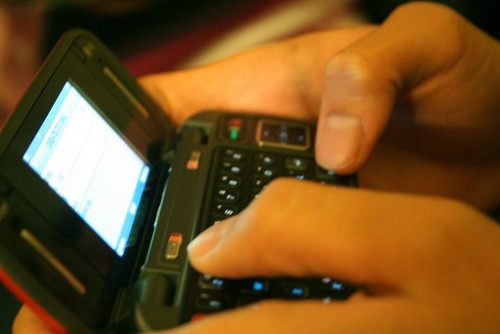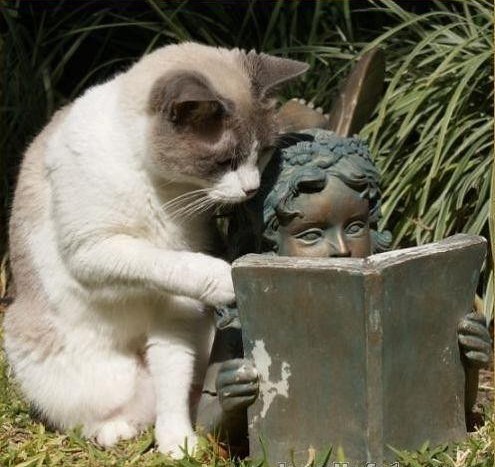Posts from — September 2009
What isn’t technology?
After reading and thinking (and dreaming!) about the definition of technology, I have come up with this:
Technology is tools, skills and techniques that we use to control and shape our environment.
Which leads me to two questions:
- Obviously writing is technology, but is language itself also technology?
- Is there anything that isn’t technology?
That is as far as I can get on my own. I now look forward to entering into the debate.
Dilip Verma
September 14, 2009 1 Comment
Technology – tool or lifestyle choice?
Technology is an indicator of intellectual progress. When I think of technology, I picture grinding gears, the industrial revolution. It never occurred to me before I read O’Donnell, that the simple invention of writing, the simplest of technologies, was to cause an irreversible change in the history of our civilization.
I have used technology to make my classes more lively and relevant. I’ve used it to teach useful work skills to my students. But I have never, until now, considered the far reaching effects of technology. It seems that whatever it touches cannot remain unchanged.
Our society pursues all things technological. We’ve been convinced that our life cannot be fulfilled without increasingly sophisticated electronic objects. Cell phones for children, Baby Einstein movies for mental stimulation of infants; the language of technology is so pervasive that we are being told to “upgrade” our lives. Visit the following link to view Oprah.com’s take on this: http://www.oprah.com/article/home/homeimprovement/pkgupgradeyourlife/20090401-orig-upgrade-your-life-landing
Next birthday, when I am asked how old I am, I’ll answer “I’m a version 5.2”.
September 14, 2009 No Comments
Weaving tales
Words fascinate me and I love discovering where they come from. I had a little problem with text, as I remember my grandfather telling me of how in Ireland people were renowned for weaving tales and so weaving and woven were common words for me related to oral storytelling. I had never related them with the written word before, however on reflection it does make sense. Technology was more of a challenge. I had never considered the anthropological definition of technology as “a body of knowledge”. It seems so all encompassing. This would mean therefore that any new knowledge we have could be considered as technology and from there I must accept that all technology will cause changes whether we make them consciously or not.
Web Site
Definition of technology Dictionary.com retrieved on the 14th of September 2009 from
September 14, 2009 No Comments
Technology?
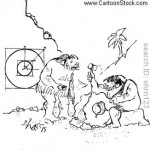
Contrary to popular belief, technology does not refer solely to computers. Technology is any instrument, machine, tool, weapon or appliance carrying out a purpose. The wheel, for example, was an ancient technology that revolutionized transport and changed the world. Technology is constantly improving and transforming into something more superior than their predecessors.
In many ways, science and technology are closely related and dependent upon each other. In the cartoon above, science appears to be “perfect”; however, the actual technology or creation did not measure up to the theory thus leaving a gap between the two fields.
Carmen Chan
September 14, 2009 No Comments
Technology comic relief
September 14, 2009 No Comments
Fabric a metaphor for text…
I have to admit that I was more interested at examining technology than text, but when I started reading the etymology of text from the Oxford English Dictionary I was immediately drawn in. My initial thoughts of simple written words were expanded by the latin root of textus – “that which is woven, web, texture” (Oxford English Dictionary). As a Home Ec teacher this caught my interest as I compared written work to that of woven fabric; both have depth, complexity and pose interest. Also, both text and fabric have wide ranging uses that are open for interpretation.
Sarah
September 14, 2009 No Comments
Meaning of Text
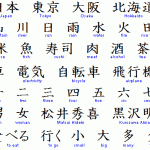
Text is any written language or series of symbols that contain meaning. The collection can be printed, engraved or painted as long as it is readable then it is considered as text. Hieroglyphs is an example of text. Electronic text is a version of the written word. Texting is the transfer of text.
The image above is a sample of Japanese texts or symbols used alone or in combination for communication. As time progresses, text and its meanings undergo transformations. Text is constantly being invented and introduced as humans progress and require extra texts to communicate effectively.
Carmen Chan.
September 14, 2009 No Comments
Text…
What is Text?
Posting by Caroline Faber
I was instantly drawn to the quote stating text is “essentially a vehicle for transmitting information and concepts.” The idea is simple and basic, opening up the doors to more complex notions. Text is a technology created to further enhance commmunication and from this, we can explore text further, in more complex capacities.
I was intrigued by the idea that text is necessarily comprised of 5 intrinsic values. Texts are:
- Real: they have properties independent of our interests in them and theories about them,
- Abstract: the objects which constitute texts are abstract, not material objects,
- Intentional: texts are, necessarily, the product of mental acts,
- Hierarchical: the structure of texts is fundamentally heirarchical,
- Linguistic: texts are linguistic objects; renditional features are not part of texts, and therefore not proper locations for textual meanings.”
…and now I anticipate challenging this to see if I can find examples of where this may not apply and underlying reasons for any exceptions.
Renear, A., McGann, J., and Hockey, S. (1999) What is Text? A debate on the philisophical and epistomological nature of text in the light of humanities computing research. University of Michigan. Accessed at: http://www.humanities.ualberta.ca/susan_hockey/ACHALLC99.htm
September 13, 2009 No Comments
Texting, Text and Technology
The warning was clear.
“Don’t spend too much time wandering in the Commons: it can be an amazing place in which to get lost!” (Module 1, instructions for Flickr activity).
I got lost anyway. For days I searched for the image that I thought would be indicative of the issues relating to the course, until it hit me. Literally.
He was a preppy-looking teenager, busily texting on his iPhone. He never looked up, even after our brief, but painful physical contact. When function was finally restored to my thumbs, I did the only natural thing: whipped out the cell phone and wrote myself a reminder through email — “Idea for Flickr activity: TEXTING!”
The connection between texting and text and technologies is self-explanatory and almost too obvious. Creating text using cell phone technology! Of greater interest though, is how computer technology and new software are changing our language patterns, as evidenced by the addition of podcasting to the Oxford English Dictionary in December 2008, and when third graders scurry over after a read-aloud and comment, ‘”O.M.G! That was such a funny book, L.O.L”
September 13, 2009 No Comments
The Power of the Written Word
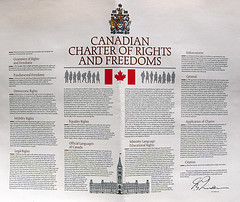
According to the Merriam-Webster’s Dictionary, the definition of text is: “the original words and form of a written or printed work (2) an edited or emended copy of an original work”( http://www.merriam-webster.com/dictionary/text).
Text is made up of Words. Words=Freedom. Freedom=Power.
I chose the picture of the Canadian Charter of Rights to indicate the power of text. Text can record history, put laws into effect, allow us freedoms that are documented for the next generation, and enables the recording of the passage of time. Text can describe in such a way as to ignite our imaginations and incite our passions. Putting on to paper the visions and aspirations that only lie in our minds is an amazing innovation.
September 13, 2009 3 Comments

I liked the way the Merriam-Webster Dictionary defines technology: “…the sum of the ways in which social groups provide themselves with the material objects of their civilization” ( http://www.merriam-webster.com/dictionary/text).
Ong describes technology as not to degrade human life but to enhance it (Ong, 2008, p. 82). Unfortunately, technology has encapsulated many parts of our society, and instead of enhancing it, has enslaved it. A quick look around your environment will reveal the extent that technology has encapsulated us. Drivers who are glued to their bluetooth, people who cannot live without their cell phones or blackberries tied to their hips, people interrupting your conversation with them to attend to their vibrating cell phones, etc. All signs of a society that is techno-savy.
I chose the picture Slave to Technology as it reinforces the idea that these tools are not necessarily our slaves, but we are in some ways slaves to it. It was a great picture depicting how our hands are tied to technology. However, after fighting for an hour trying to insert it into my post – I gave up and chose this picture instead. Ironic isn’t it? Technology got the best of me!
Finding the balance of integrating technology into our lifestyles is the key to our success.
September 13, 2009 1 Comment
Shedding light on the meaning of technology
September 13, 2009 2 Comments
Shedding light on the meaning of text
This is a passage from Richard Vella’s lecture originally presented in a fourth year composition class at the Sydney Conservatorium of Music, 1989. Entire lecture can be viewed at http://www.rainerlinz.net/NMA/repr/Music_theatre.html
Text does not mean words but rather the word text comes from the latin texere , to weave. Textum came to mean the tissue or web of a thing which is woven. The texture is then anything that is woven, the quality of the weave. In other words the text is the weaving together of all the elements into a shape, fabric, form. In music this came to mean texture. The text of a book or essay is the weaving together of all the various arguments via words. In film and opera the text is the weaving of the sonic and visual via their respective technologies. Texture is the fabric, text is the argument.
The setting of words to music is not simply text and music but rather the text is the overall weaving of the literary text with the musical texture. The text is the `meaning’ (argument) the composer wants to communicate via all these elements.
September 13, 2009 No Comments
My original take on technology
Technology defined
Technology – My first thought was the microchip and the profound impact it has had on our daily lives. I realize that one could make an argument that just about anything from our basic needs (i.e. from the cloths we wear, the food we to the things we use to shelter ourselves) to the non-essentials in life (i.e. various modes of transportation, different types of entertainment) could also be categorized as technology. Through the centuries there have been scores of ‘advances’ in just about every field mentionable. Medicine is perhaps the best example of this. Modern warfare is another one. I believe it’s called progress although one has to wonder about some of the choices we have made.
September 13, 2009 No Comments
My original take on text
Text defined
Text – In the strictest sense, I take this to mean the written word. It can be in any language that has a written component to it. Text can appear in just about any order (i.e. left to right, right to left, top to bottom, bottom to top). It can be presented in any number of ways (i.e. carved, painted, etched, engraved) using a variety of mediums (i.e. using paper, wood, stone, metal). Text is a form of expression – painters paint, photographers take pictures, directors make movies and writers write – they all have something they want to say.
Bruce
September 13, 2009 No Comments
Reading
Studying, originally uploaded by etec540’s photos.
I like this picture ! It seems that the statue is reading deeply, whereas the cat has just a rapid look and wants to turn the page. Maybe the cat doesn’t like reading in a classical approach (book) in compare with peace and serenity of the statue in its reading. Maybe the cat prefers using new technologies in reading whereas the statue is faithful to that antique book ! But I feel a sense of cooperation/coordination between them, instead of a conflict. I think, that should be the aim of any education program in a society composed of different groups/people.
Who am I
Hello everybody,
My name is Hosein Moeini. I’m a new comer to Canada. I came to live in Vancouver, 80 days ago. Therefore this is my first semester in MET. It is difficult when people move from one apartment to another. It is much more difficult when you move to another city, another country and another continent !
I was teaching in the university before coming here. I received B.S. and M.S. in industrial eng. and I worked for several years as a system programmer. Then I started Ph.D. in computer and educational technologies. Later, I changed my job and worked as an instructional designer for three years and then a university instructor when I received Ph.d. The courses I taught were designing web-based course materials, web programming and Java (my favorite language !). lack of Canadian experience is a big problem for new immigrants to find a job. My Canadian experience is just limited to articles that I presented in E-learn and Ed-Media conferences in 2005, 2007 in Vancouver.(Also an article in E-learn 2009, in October).
I’m sure I’ll learn a lot from this course and my colleagues when we exchange our ideas and talk.
Best regards
hosein
September 13, 2009 No Comments
Technology…simply put…
Posting by Caroline Faber
Defining technology is simplified in choosing to view technology as end-product of desire.
“Technology is the extension of our human capabilty, in order to satisfy our needs or wants.”
Technology can be simple or complex; original or improved; frivilous, necessary or somewhere in-between. The basis remains, however, that it is limited by current human capability and driven by current desire.
Taken from UNESCO (United Nations Educational, Scientific and Cultural Organization) (2003) Technology Education Guide (pp. 27). Accessed at: http://unesdoc.unesco.org/images/0013/001320/132001e.pdf
September 13, 2009 No Comments
A Matter of Metaphor

My title, lifted from my favourite chapter (3) in Nardi and O’Day’s (1999) Information ecologies: Using technology with heart, describes my take (or my aspiration) on technology far better than I ever could.
“Our concepts about technology are often embodied in highly packed metaphors….Metaphors matter. People who see technology as a tool see themselves controlling it. People who see technology as a system see themselves caught up inside it. We see technology as part of an ecology, surrounded by a dense network of relationships in local environments” (pp. 25-7).
Nardi, B.A. & O’Day, V.L. (1999). Information ecologies: using technology with heart. Cambridge, Mass: MIT Press.
The combination of Kurzweil and Nardi/O’Day is powerful, but manageable. Kurzweil’s TED talk highlights the embeddedness of technology in our everyday lives as well as its seemingly unstoppable, exponential growth. Nardi and O’Day act as society’s conscience sitting on our shoulders and prodding us to act wisely. The spotlight is not on technology, but on human activities that are served by technology.
The juxtaposition of the straightforward, engineer Kurzweil and the combination of HCI researcher Nardi and O’Day, the anthropologist provides a balanced view. A balanced view is often hard to find. One can move from the technophiles’ beliefs to the technophobes’ assertions, but there is often no middle ground in the debates and literature. As much as black and white would be easier, technology is gray and overlays everything.
Studying something as ubiquitous as technology is challenging, but becomes all the more necessary to unpack. These courses are an invaluable resource to this study; each of us brings his/her own “dense network of relationships” to shed different understandings on the term.
September 13, 2009 No Comments
Weavings, musings, mash ups

ETEC 540, originally uploaded by livingkatstone.
Peggy French’s confession: This is a carry-over from my vacation quest to find everyday objects in the shapes of letters so I may spell words and frame for Christmas gifts. But really, I did also relax during my vacation!
I used a mashup where you spell and Flickr photos are nabbed represent your word. I went with curiosity and knowledge for their integrated power and interdependence. It’s also something I see missing from the majority of the student population at my institution. There seems to be a lack of curiosity and a preference for information over knowledge (a.k.a. the answer the instructor wants vs. creative interpretation and/or the path to more questions). It may be a tactic to harness the information overload they feel or a reaction to the often superficial ways in which we dip into information these days through multi-tasking or using the first half screen of a Google results list.
I admit, I also appreciate the symmetry of equally-lettered words!
Now that you know I’m a tad anal and perhaps believe me unable to relax, I’ll add another very telling piece to the puzzle – I’m a librarian. I made the switch from elementary school teacher to librarian about 7 years ago and currently coordinate the research skills instruction program at Mohawk College in Hamilton, ON. I work with other faculty on assignment and assessment design as well as provide 40 minute sessions to students on evaluating sources, super searching, academic integrity, and other issues not immediately scintillating to the average 20 year old. (I should have added humour to my collage as that’s something required to disseminate properly topics a tad on the dry side. But alas, humour has only 6 letters.)
Most recently, I’ve become heavily involved in our organization’s new learning management system, Desire2Learn. Therefore, developing a greater understanding of educational technology is imperative as my organization moves more from web-facilitated to blended or online courses.
I plan to pick all brains especially those with more experience designing and delivering content in an online environment.
Here’s to a successful semester!
September 13, 2009 1 Comment
Bruce’s Choice
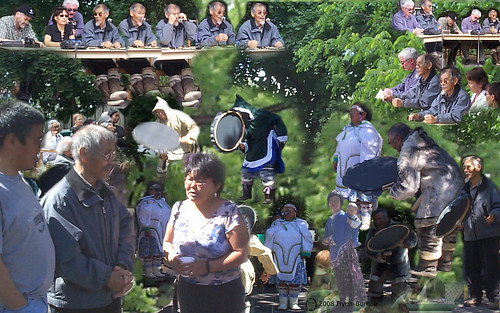
Mariano Aupilardjuk, Pond Inlet Drum Dancers at Larga, originally uploaded by ocean.flynn.
MY PICTURE
This picture is about an elder (Mariano Aupilardjuk) from Pond Inlet, Nunavut. He was honored for his work with the youth in his community and for his contributions to his people in general.
I have spent the last nine years working and exploring Canada’s north. The only province/territory I have left to visit is Nunavut. Oral tradition is still very important to Canada’s indigenous people.
WHO AM I
Hello everyone.
My name is Bruce Spencer. I am the Training Coordinator for De Beers Canada. I’m currently living in Yellowknife, NT and I work at Snap Lake Mine, a remote diamond mine 220 km northeast of Yellowknife. I work a four and three rotation, meaning I only work four days. I fly to the mine site Monday morning and return Thursday afternoon.
My job involves a multitude of things – everything from scheduling training courses to maintaining the LMS. I work with a team of four others in providing support to all of our employees, many of whom are of first nations decent.
I teach whenever I can. I am certified to train employees in Confined Space, Fall Protection and First Aid. I teach computer related courses (basic computer skills, various software products, etc.) and I provide basic educational training (literacy and numeracy skills, GED, ADLC, trades exam preparation, and so on) when time permits.
ETEC 540 is my seventh MET course. I have been an educator since 1984 and only just recently made the switch from teaching school age children to adults. I am looking forward to exchanging ideas, stories and even a laugh or two with you all, over the course of the next several months.
Cheers
September 13, 2009 No Comments

